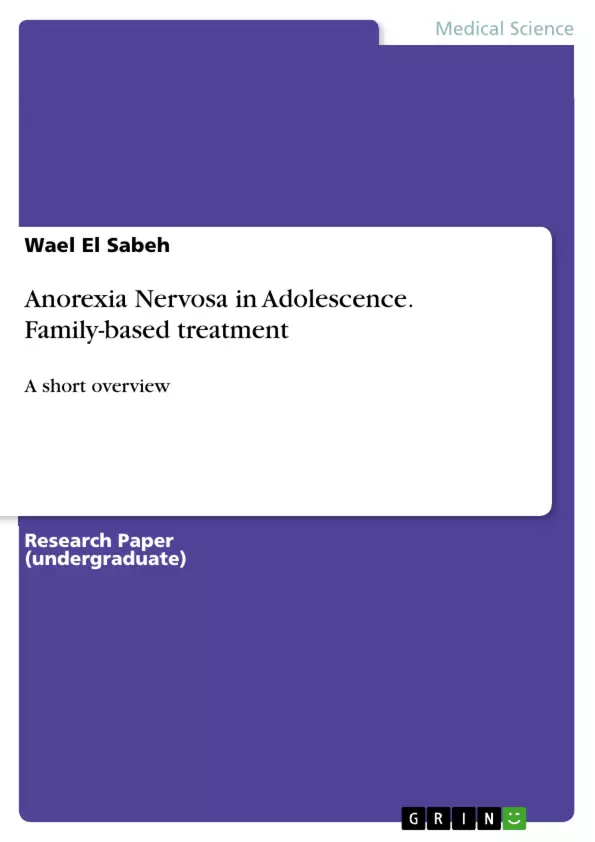This paper will discuss family based treatment Anorexia Nervosa in Adolescence. When one family member has anorexia nervosa the whole house is affected. Hence it is very crucial for the whole family to cope with this disorder to find a solution for it.
Family based treatment is basically a treatment that seeks to avoid hospitalization and makes parents interact in the process of restoring their offspring back to healthy lifestyle and in this case hence back to a healthy weight.
Anorexia nervosa is an eating disorder that targets mainly adolescents. Females more than men are likely to have this disorder. There are many ways of treatment, some include hospitalization, and some are based on family-based treatment. In this paper I will discuss Family Based Treatment as I believe it’s crucial. Family plays an important role and can help in changing their family member eating habits. Ways a family can help to change eating habits are to reduce meal anxiety, Siblings relationship, enabling new ways of understanding and relating, enhancing or maintain negative power dynamics, and vulnerable transitions. They are further discussed in the paper.
Inhaltsverzeichnis (Table of Contents)
- Anorexia Nervosa in Adolescence
- Family-Based Treatment
- Enabling New Ways of Understanding and Relating
- Siblings' Relationships and Different Ways of Involvement
- Reducing Meal Anxiety
Zielsetzung und Themenschwerpunkte (Objectives and Key Themes)
This paper examines the role of family-based treatment (FBT) in the management of anorexia nervosa in adolescents. The paper highlights the importance of family involvement in restoring healthy eating habits and improving overall well-being.
- The prevalence of anorexia nervosa in adolescents, particularly among females.
- The impact of anorexia nervosa on the individual and their family.
- The benefits of family-based treatment in addressing anorexia nervosa.
- The key themes within FBT, including enhancing family relationships, reducing meal anxiety, and navigating vulnerable transitions.
- The limitations and challenges associated with FBT.
Zusammenfassung der Kapitel (Chapter Summaries)
The paper begins by defining anorexia nervosa and discussing its prevalence, particularly among adolescent females. The paper highlights the serious health risks associated with the disorder, including malnutrition, cardiovascular problems, and even death. It also explores the social factors that contribute to the development of anorexia nervosa, such as societal pressures for thinness and the influence of social media.
The paper then delves into the importance of family-based treatment (FBT) for anorexia nervosa in adolescents. FBT aims to avoid hospitalization and involve parents actively in the process of restoring their child's health and weight. The paper outlines four key themes within FBT: enabling new ways of understanding and relating, enhancing or maintaining negative power dynamics, vulnerable transitions, and siblings' relationships and involvement. The paper discusses the positive impact of FBT on family relationships and the importance of reducing meal anxiety in the treatment process.
Schlüsselwörter (Keywords)
The key focus areas of this paper are anorexia nervosa, adolescents, family-based treatment, family dynamics, meal anxiety, sibling relationships, and societal pressures.
- Quote paper
- Wael El Sabeh (Author), 2020, Anorexia Nervosa in Adolescence. Family-based treatment, Munich, GRIN Verlag, https://www.grin.com/document/585303



